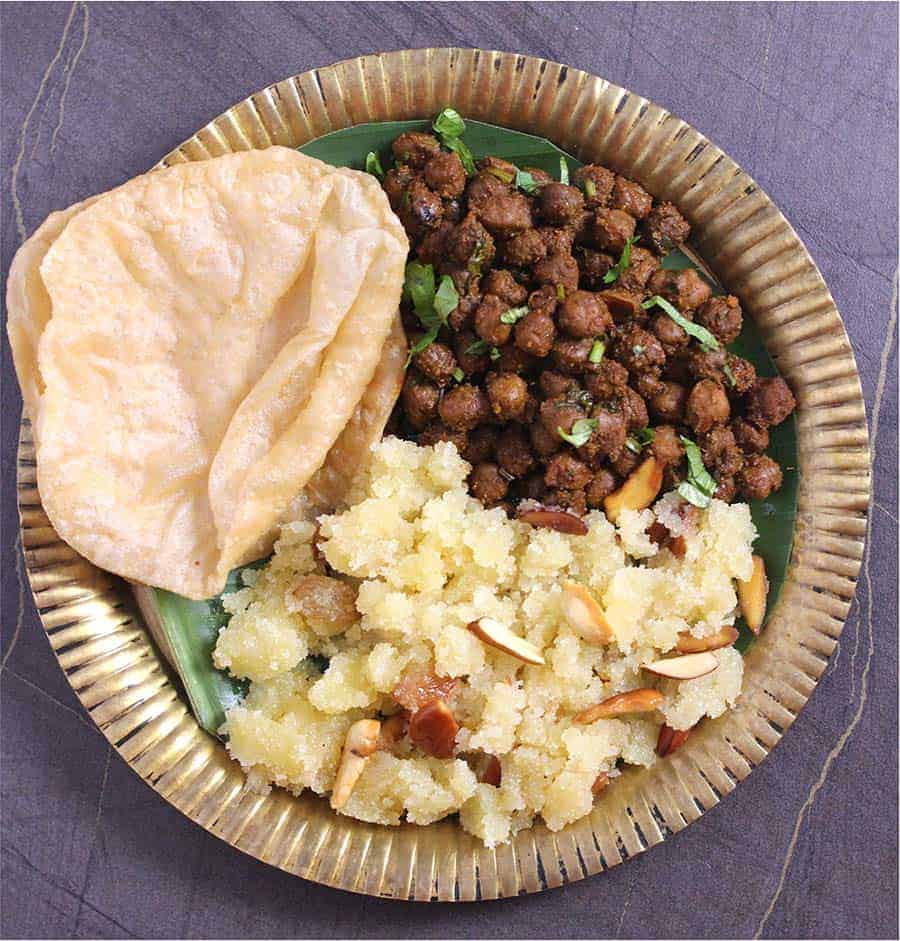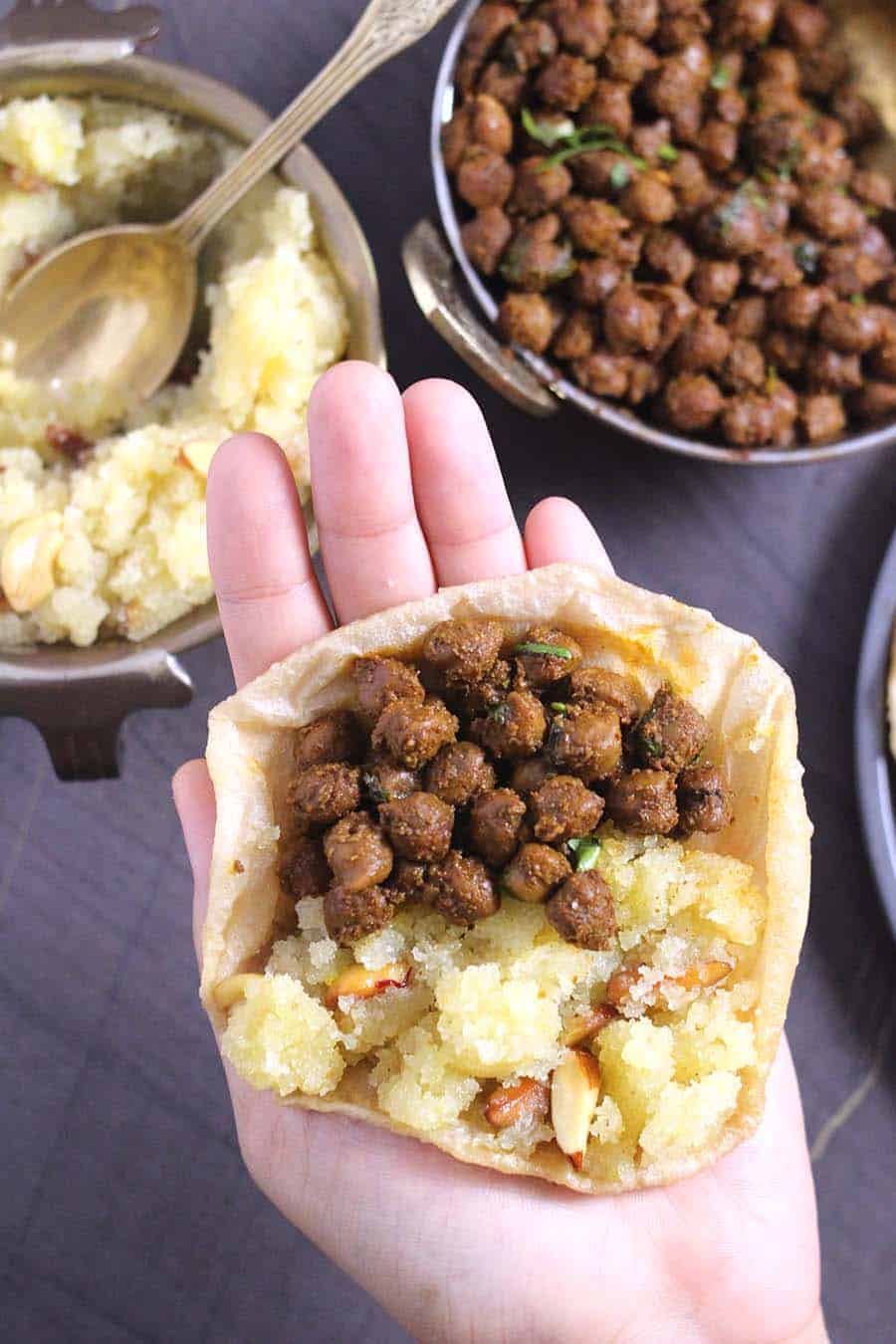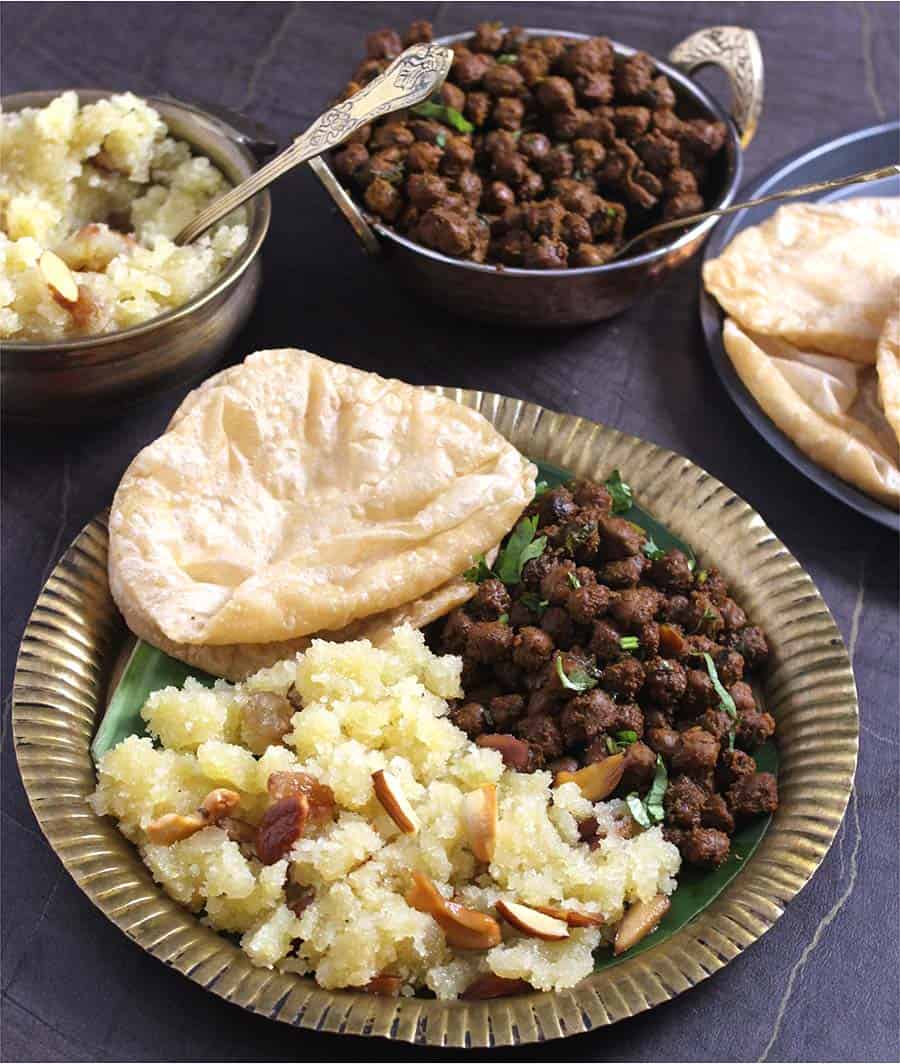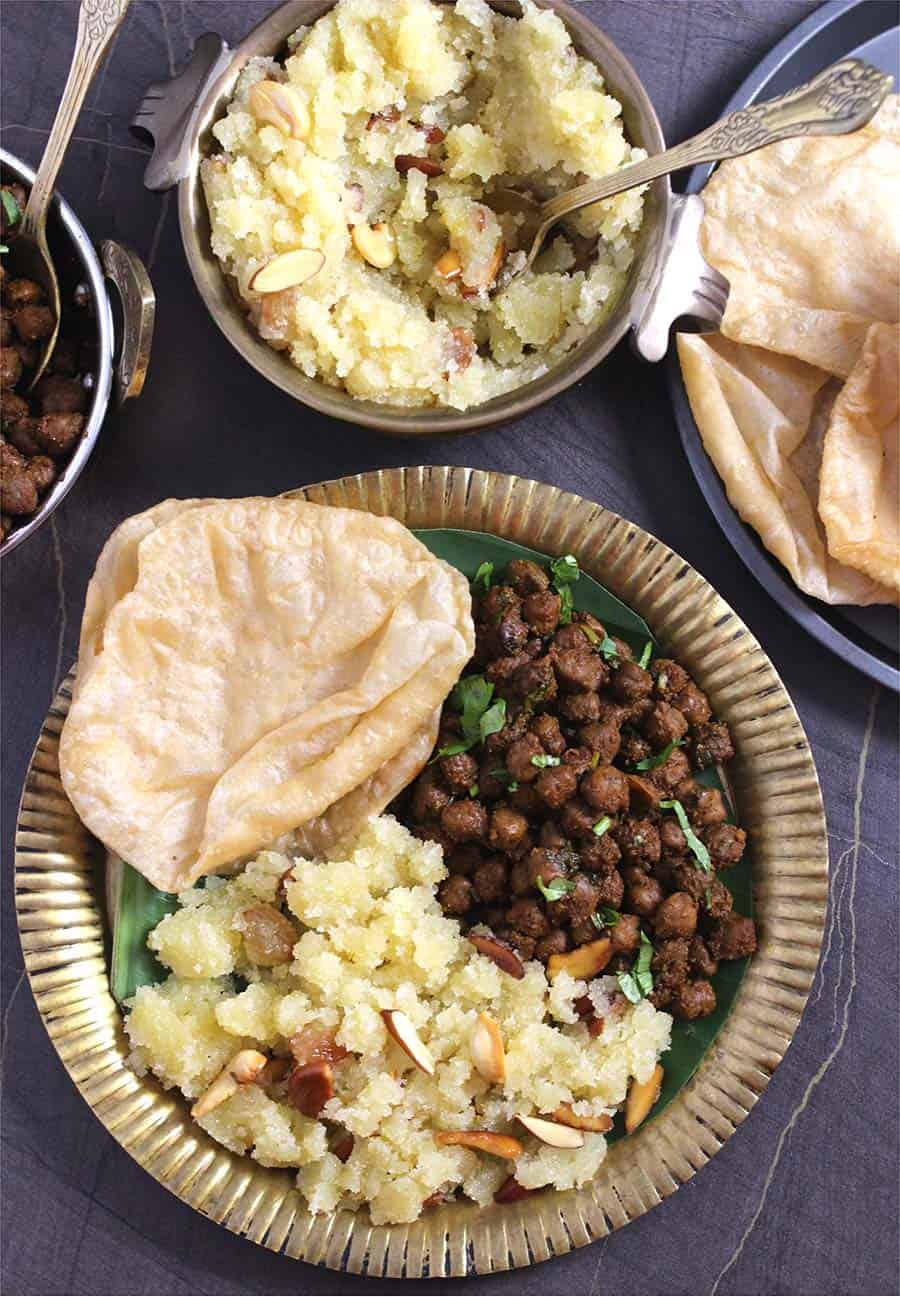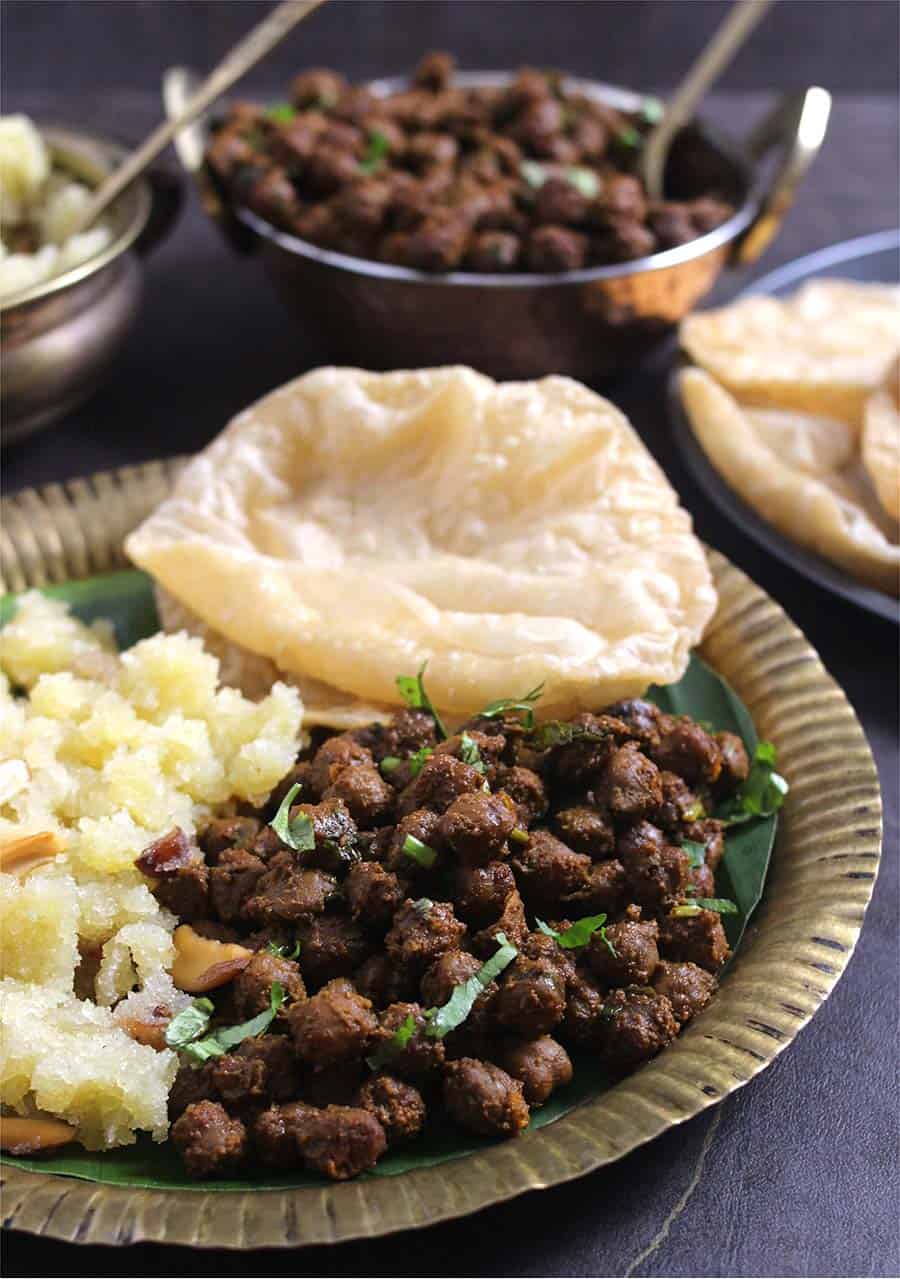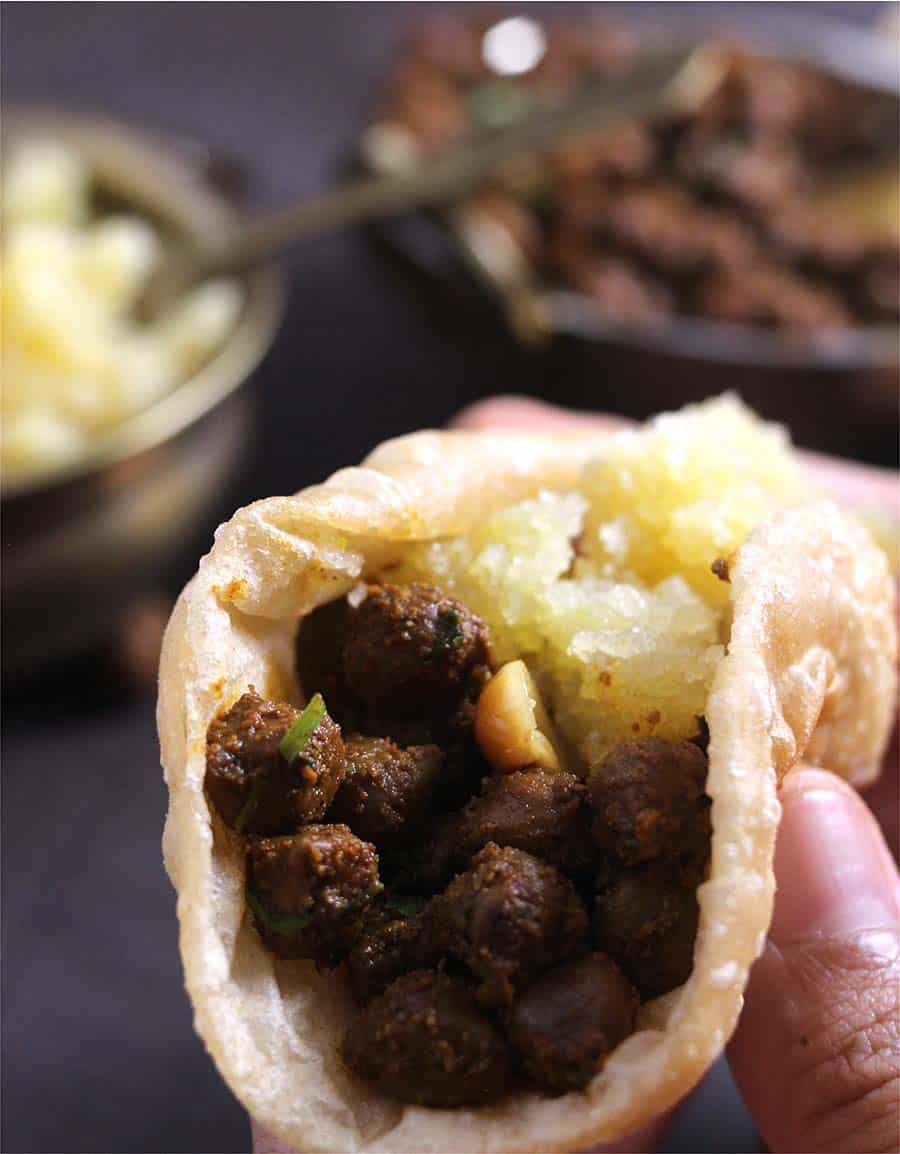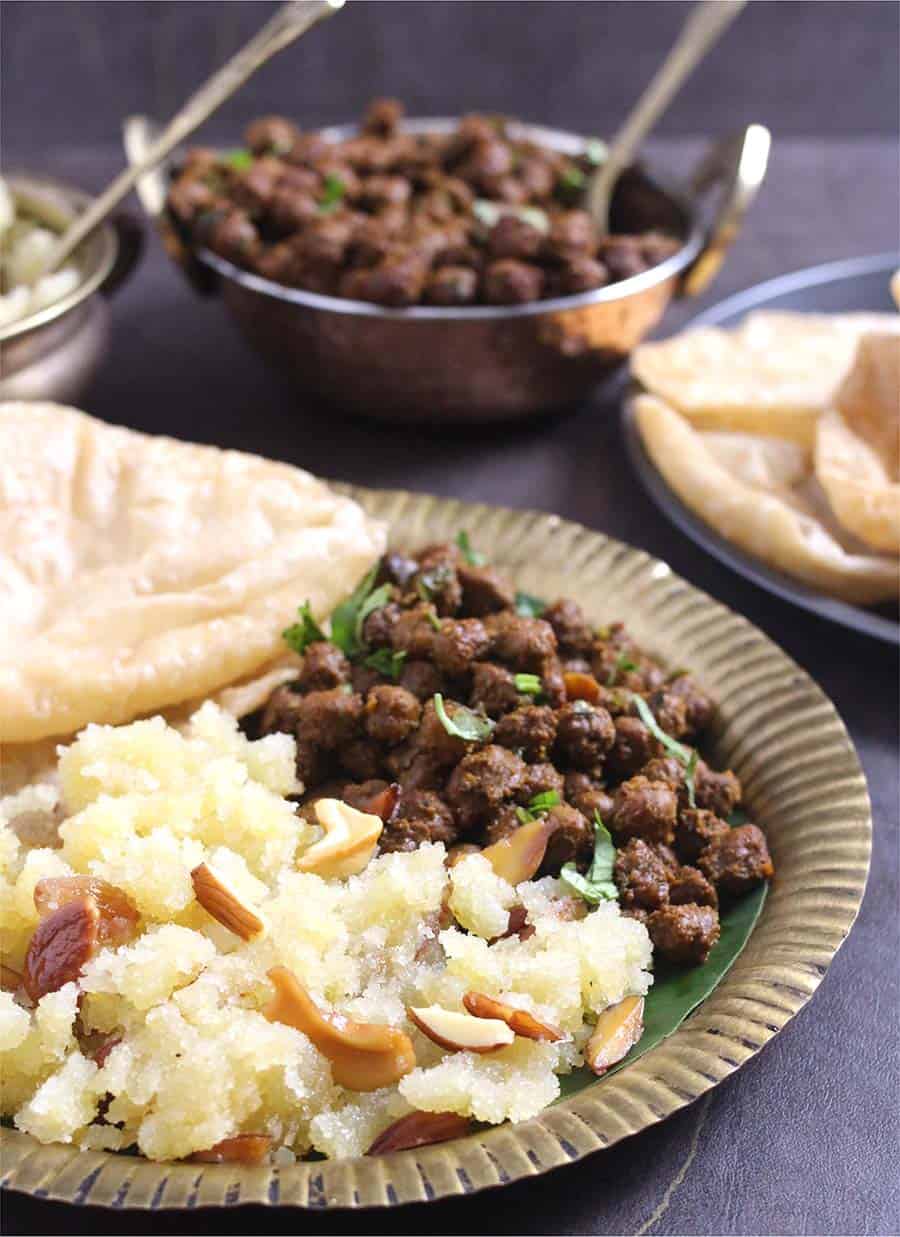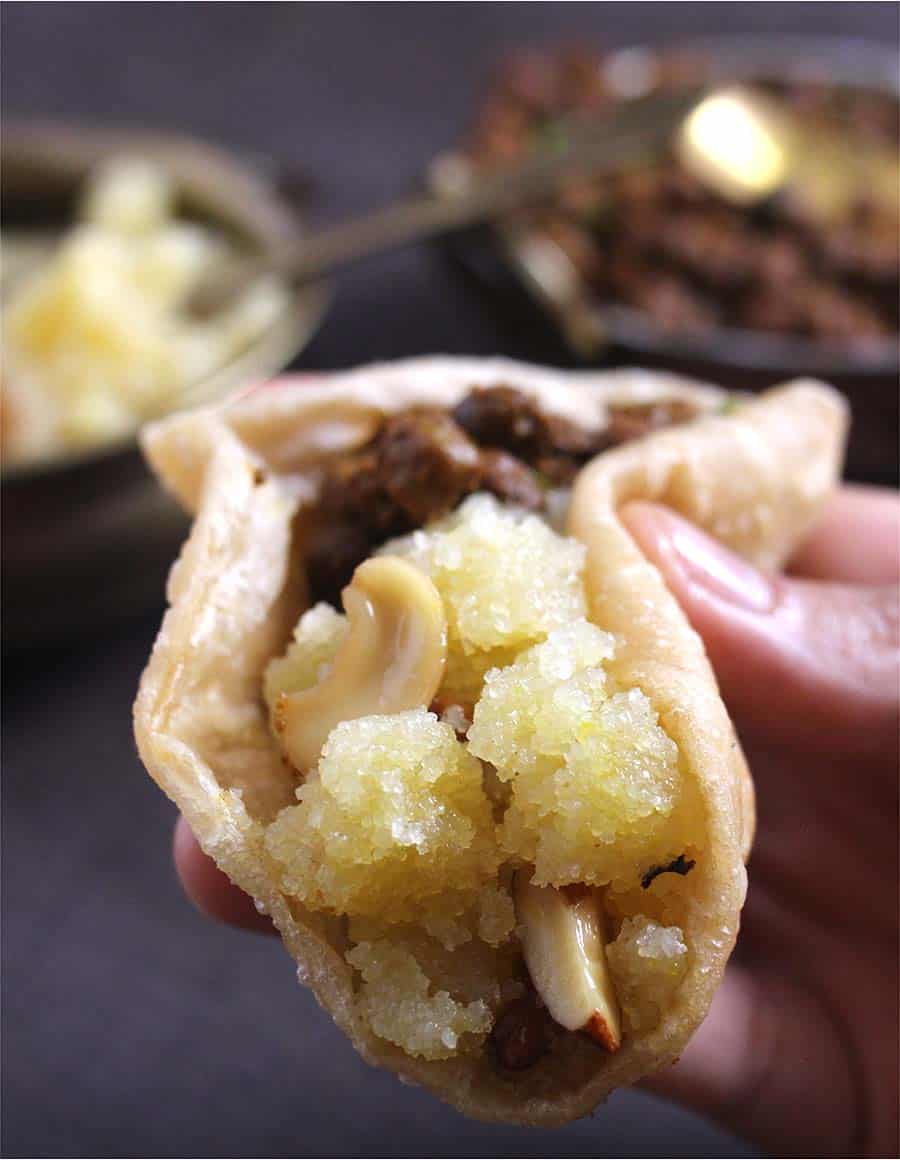These three recipes are prepared specially during the Navratri festival’s Ashtami and Navami days as prasad in North India. But if you come to our coastal region, chane usli (sundal) and sheera are popular prasad items served at almost all temple and Gurudwara events and during festivals like Diwali, Varamahalaksmi vrat, Ekadashi, Sankashti, Kanya Puja, Ram Navami, Makara Sankranti, Sai Guruvar, etc. I agree every region and community in India has its own culture and tradition for different festivals. Still, at the same time, I can say this is the most loved prasad recipe in India. There may be variations to the recipes, but people love this combo.
Now you don’t have to wait for any festivals or occasions to prepare this recipe. You can also serve this as breakfast nashta. In our house, we prepare such recipes when we are not allowed to consume rice items or onion and garlic. I will explain more on different variations of sheera (sooji or semolina halwa), poori (how to make perfect puffed puri), and kala chana (cholay) separately. But as Ashtami, Navami, and Vijayadashami (Dussehra) are celebrated across India and the world, I thought I would post a quick recipe on the most commonly prepared prasad, which will be helpful for all those who have kept Navratri vrat all these days.
Ingredients for Halwa Poori Chana (Sheera Puri Cholay) - Prasad Recipe
1 cup Kala Chana or Chickpeas (dry) 2 tablespoon Oil 1 tablespoon Chile powder 1 tablespoon Coriander powder (Dhania) ¼ teaspoon Turmeric powder ½ to 1 teaspoon Garam masala powder ½ to 1 teaspoon Amchur or Chat Masala 1 tablespoon Coriander leaves or Cilantro, chopped ½ to 1 teaspoon Salt (adjust to taste) ½ cup Ghee 1 tablespoon Cashews 1 tablespoon Almonds 1 tablespoon Raisins 1 cup Semolina or Sooji or Suji 1 cup Sugar (can add 1 or 2 tablespoon extra for little extra sweetness) 6 strands Saffron (Kesar) ¼ teaspoon Cardamom powder 1 cup Atta or Whole-wheat flour ½ to ¾ teaspoon Salt (adjust to taste) Water as need (approx ½ cup + 1 tbsp) Oil, for frying
Wash and soak chickpeas in water for 6 hours or overnight. If you are using canned chickpeas, ignore this step. The following day, drain the water. Add chickpeas to the pressure cooker along with 3 to 3 ½ cups of water and pressure for 3 whistles. One whistle on high flame and two on medium flame. Then, switch off the flame. Let the pressure release naturally. The time to cook chickpeas and the number of whistles will depend on the location you stay. Reserve the water (aquafaba) in which chickpeas were cooked. You will use this water for the recipe below.
In a pan, add oil, chile powder, coriander powder, turmeric powder, garam masala powder, and amchur powder and saute for 30 seconds to a minute on medium-low flame. To this, add ½ cup of reserved chickpea water and nicely stir, and bring to a boil. Now add cooked chickpeas, another ¼ to ½ cup of reserved chickpeas water, and salt to taste. Bring this to a boil on medium to high flame and cook it uncovered till all the water is absorbed completely and the flavors are well combined. Stir occasionally during the process. Garnish it with coriander leaves and switch off the flame.
Add 3 cups of water to a pan and bring it to a boil. Meanwhile, when the water is boiling in another pan, add ½ cup of ghee, cashews, and almonds. When they become light golden in color, add raisins and semolina and saute for one or two minutes on medium flame until aromatic. To this, slowly add boiling water using one hand and keep mixing using the other. You can add saffron at this stage. I had kept 3 cups of water for boiling but used only 2 ½ cups of water. Use water only as needed. Check the video on making of suji ka halwa.
Once all the water is absorbed by semolina, add sugar and keep mixing and cook until ghee leaves the sides of the pan on medium flame (maybe another 2 to 3 minutes). Add cardamom powder, mix and switch off the flame. In a bowl, add flour, salt, and water little by little to form a stiff dough. You can grease the dough ball with 1 teaspoon of oil if needed. I generally don’t rest my poori dough. Rolling pooris immediately and frying enables them to puff up and remain soft for a longer time. Pinch a small portion of the dough and roll it between your palms to form 15 dough balls.
Flatten each dough ball and roll them into a circle of approx 1 to 2 mm thick (not too thick or too thin). Meanwhile, when you are rolling, heat the oil in a pan for frying. Once the oil is hot, drop rolled-out pooris and gently press using the back of a ladle so that it puffs and comes up. Now flip and cook on another side till it is crisp and lightly golden, about 30 secs to a minute. Halwa Puri Chana is all set to serve! Enjoy. In advance, I wish you all a very happy Ashtami, Navami, Dussehra, and Happy Diwali 2021.
Recipe card
For more recent updates, follow me on Pinterest, Instagram, and Twitter. Click below to save it on Pinterest
